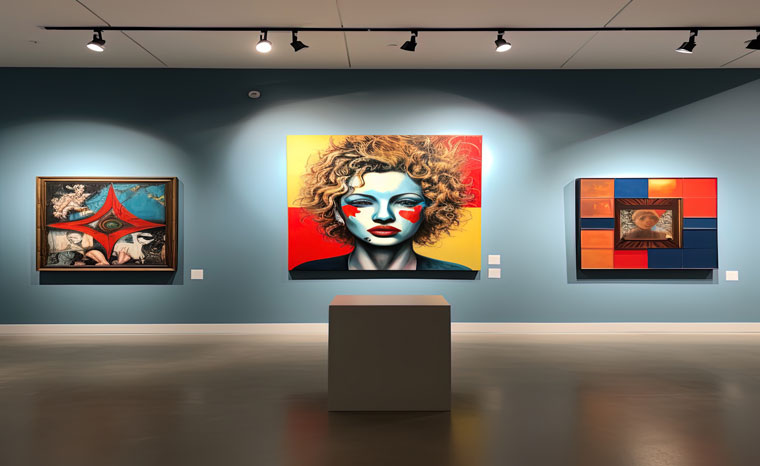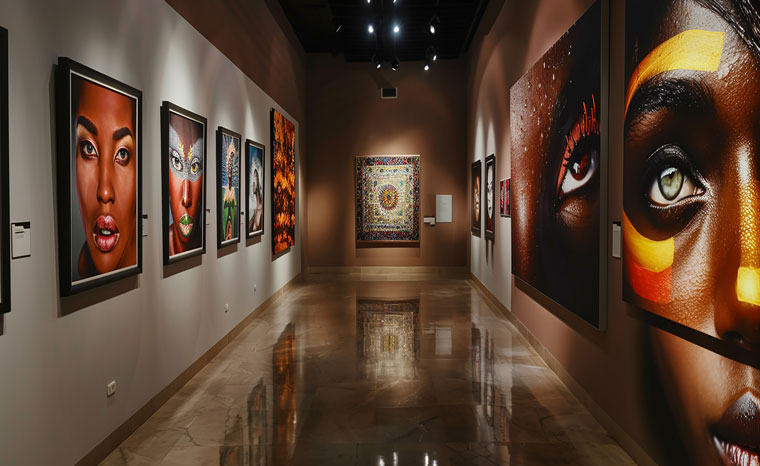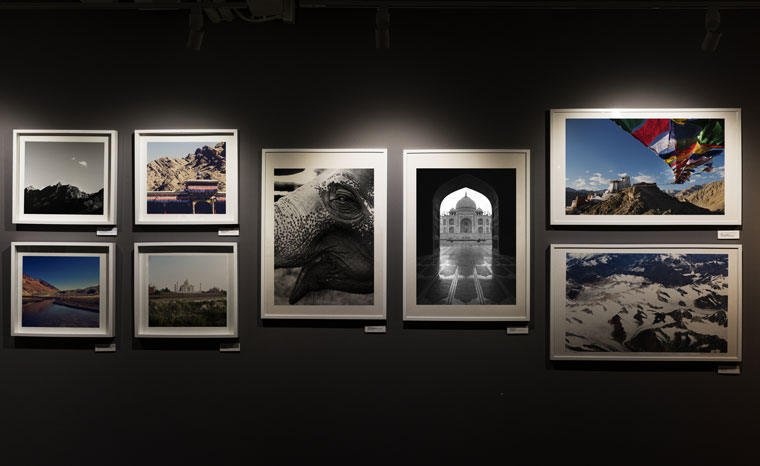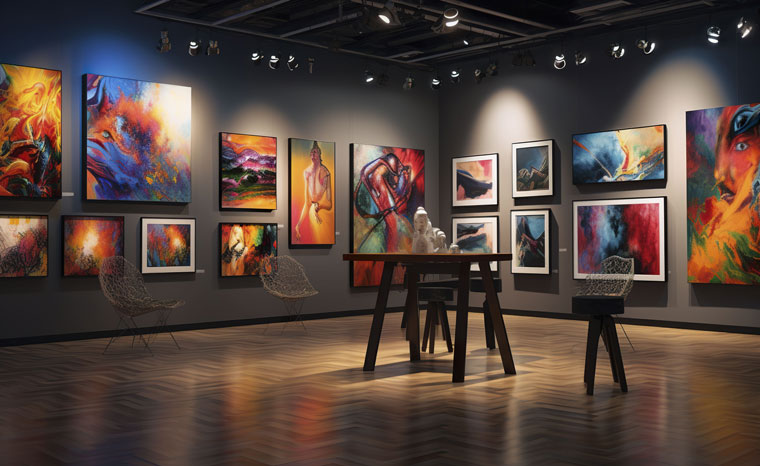Art Exhibitions: The Art of Photography in Motions
Art exhibitions have a unique way of capturing life’s moments, and dedicated to photography brings this concept to the forefront. Photography, often described as a “window to the world,” allows us to frame beauty in ways that provoke thought, inspire emotion, and transport us to different places and times. In this blog post, we will explore the significance of art exhibitions focusing on photography, how they evoke emotion, and their transformative power. We will also cover recent impactful galleries and the emotional palette they present.
Art Exhibitions: Framing Beauty Through Photography
Photography is as much an art exhibitions of thought as it is of sensitivity and insight involving light and composition. The photo exhibitions by the artists point out the works that frame beauty in innovative ways. Each photograph tells a story – a portrait capturing one’s reality, a landscape describing the grandeur of nature, or a candid encapsulating a moment in life. Such special themes as the intricacies of a groom’s wedding dress add depth to these exhibitions, with elegance and detail in the wedding attire. These art exhibitions provide a forum for artists to present their art portfolios, highlighting their unique perspectives and styles.
The beauty of photography lies in its ability to evoke emotion and connect with viewers. This is especially important in the realm of art blogs, where photographers can discuss their inspirations, techniques, and the stories behind their images. Photography can transcend language barriers and cultural differences, making it a universal expression.
In art exhibitions, photographers can experiment with different themes and concepts, pushing the boundaries of their creativity. Themes such as art and emotion often emerge, inviting viewers to engage deeply with the images on display. For instance, exhibitions that focus on social issues, personal narratives, or environmental concerns can resonate strongly, prompting viewers to reflect on their own experiences and feelings.
The Role of Technology in Photography
In recent years, technology has transformed the way photographers approach their craft. With advancements in camera technology and editing software, artists can experiment with new techniques and styles, resulting in stunning visual narratives. This evolution has also influenced art exhibitions, as curators seek to incorporate interactive elements that enhance the viewer’s experience.
For example, many art exhibitions now feature QR code artwork, allowing visitors to scan codes next to pieces to access additional information or multimedia content. This blend of traditional photography and modern technology creates an engaging experience that resonates with contemporary audiences.
Additionally, the rise of social media has changed the way photographers share their work. Platforms like Instagram have become vital tools for artists to showcase their art portfolios, reach broader audiences, and engage with fans. This democratization of art has led to a new generation of photographers who are eager to express their vision and connect with others.
RVR School: Paving the Way to Photography Excellence and Shaping the Future of Creative Talent By Simran

Art and Emotion: An Overview of This Year’s Most Impactful Galleries
Among the many significant art exhibitions of the year, such as Griha Pravesh, the exhibitions captured emotion and storytelling through photographs. The works presented reveal topics concerning human experience, identity, and social issues, being closer to the realities of the spectators.
One notable art exhibition is “Human Stories,” featuring photographers who explore the complexities of life through their lenses. Each piece in this art exhibitions serves as a testament to the resilience of the human spirit, capturing raw emotions that are often overlooked in our fast-paced lives. The artists use their work to highlight themes of hope, struggle, and connection, creating a powerful narrative that engages viewers emotionally.
Art Exhibition, Exploring Cultural Identity.
Cultural identity is another crucial theme present in many impactful exhibitions. “Cultural Reflections” is an exhibition that examines the intersection of identity and culture through the lens of photography. Artists showcase works that reflect their personal experiences while exploring broader societal issues related to race, ethnicity, and belonging. This exhibition emphasizes the importance of representation in art, providing a platform for diverse voices and perspectives.
Through the lens of photography, audiences are invited to engage with complex narratives that challenge stereotypes and foster understanding. The emotional depth of these images encourages viewers to confront their assumptions and reflect on their own identities, making the experience profoundly personal and transformative
Art Exhibitions That Evoke Emotion: A Review of This Year’s Highlights
When we think of art exhibitions that evoke emotion, it’s essential to consider the work of contemporary photographers who have made significant contributions this year. These exhibitions have not only showcased exceptional talent but also engaged viewers in meaningful conversations about important themes.
One such exhibition, “Faces of Change,” features portrait photography that captures individuals at pivotal moments in their lives. The images reflect a spectrum of emotions, from joy to sorrow, inviting viewers to connect with the subjects on a personal level. Each portrait tells a story of transformation, making this art exhibitions a powerful exploration of identity and resilience.
The Role of Documentary Photography
Documentary photography has emerged as a powerful tool for evoking emotion and fostering social awareness. This year’s art exhibitions, “Silent Voices,” focuses on documentary photography that sheds light on pressing social issues, such as poverty, displacement, and climate change. Through compelling imagery, photographers capture the struggles and triumphs of marginalized communities, sparking empathy and encouraging viewers to engage with these important topics.
The emotional impact of documentary photography lies in its ability to humanize complex issues. By presenting intimate portraits and candid moments, photographers invite audiences to connect with the stories behind the images, fostering a sense of compassion and understanding. This connection can inspire action, as viewers become more aware of the challenges faced by others and feel compelled to contribute to positive change.
Heartfelt Art: Exploring the Most Emotional Exhibitions of the Year
The emotional depth found in photography can create a profound impact on viewers. This year’s most emotional art exhibitions have showcased works that resonate deeply with audiences, often leaving lasting impressions.
For example, there is an art exhibitions “Lost and Found,” full of nostalgia and longing pictures. Photographers have captured ordinary moments intimate yet universal in beauty-the beauty of the mundane. The exhibit thoughtfully shows how lighting and timing, like Best Time for Outdoor Photography, can make simple scenes memorable. This exhibition reminds us of our ties with each other and the absolute evanescence of time.
The Use of Color and Composition
Color and composition play a significant role in the emotional impact of photography. In “The Color of Emotion,” photographers explore how different hues and arrangements can evoke specific feelings. Warm colors may inspire joy and passion, while cooler tones can convey sadness or introspection. Through careful consideration of these elements, artists can guide viewers’ emotional responses, creating a more immersive experience.
This Art exhibition also highlights the importance of visual storytelling. By combining color, composition, and subject matter, photographers can craft narratives that resonate with viewers on a deeper level. The emotional resonance of these images encourages audiences to engage with the artwork and reflect on their own experiences, fostering a meaningful connection between the viewer and the art.
Transformative Art: The Most Emotionally Charged Exhibitions of the Year
Transformative art has the power to inspire change and provoke thought. This year’s most emotionally charged art exhibitions have explored themes of identity, culture, and social justice, leaving a significant mark on audiences.
One standout exhibition, “Cultural Echoes,” features photographs that celebrate the diversity of cultures around the world. The images capture the vibrancy of life, showcasing traditions and customs that are often overlooked. This exhibition not only highlights the beauty of cultural heritage but also serves as a reminder of the importance of preserving these traditions in an ever-changing world.
Intersectionality in Art
Another notable exhibition is “Journeys of Healing,” which presents photography that explores mental health and well-being. Through powerful imagery, the exhibition delves into the complexities of mental health struggles, encouraging open conversations about a topic often shrouded in stigma. The emotional resonance of the images creates a safe space for dialogue, allowing viewers to connect with their own experiences and feelings.
By addressing issues of mental health, this exhibition challenges societal perceptions and encourages empathy. Through visual storytelling, photographers can illuminate the nuances of mental health experiences, fostering a greater understanding of these challenges and the importance of support.
The Emotional Palette: A Review of This Year’s Most Powerful Art Exhibitions
The emotional palette of photography is rich and varied, offering insights into the human experience. This year’s most powerful art exhibitions have showcased works that capture the essence of emotion in profound ways.
One Art exhibition, “Shadows and Light,” focuses on the interplay between darkness and illumination in photography. The images evoke a range of emotions, from despair to hope, encouraging viewers to reflect on their own journeys. This exploration of light and shadow serves as a metaphor for the complexities of life, inviting audiences to embrace both the highs and lows.
Emotional Expression through Photography
Another powerful art exhibitions is “A Moment in Time,” where photographs capture short moments of beauty and elegance. These evoke places and times and bring their viewers to nostalgia, living for the little things about life. The emotive depth of the photographs urges audiences to indulge in the present to live in the souls which represents the essence of being present in our lives. This theme very strongly resonates with the general discussion in Cinematography and Photography: Which is Better? Professional Event Photography, on how both these disciplines can beautifully capture and communicate important moments in time.
This connection between photography and emotion is what makes art exhibitions so significant. Each image invites viewers to pause, reflect, and engage with their feelings, creating a powerful experience that resonates long after leaving the gallery.

The Impact of Art Exhibitions on Artists
Art exhibitions are a place that photographers will find exposure improved significantly, and opportunities to get feedback from other artists as well as audiences. Such exhibitions can be a chance for photographers to let their work talk about their stories and build an artistic voice. Another is SIIMA Award 2024: Professional Event Photography, reminding everyone of the importance of professional recognition in their field and offering photographers a specific opportunity to earn greater credibility and to expand their professional network.
For emerging photographers, Art exhibitions can provide invaluable experience and exposure. By sharing their work with a wider audience, artists can build their reputations and open doors to future opportunities in the art business. Networking with fellow artists, curators, and collectors can lead to collaborations and mentorships that help them grow both personally and professionally.
Furthermore, engaging with viewers allows artists to understand how their work resonates with others. The emotional responses elicited from audiences can offer insights into the effectiveness of their storytelling and visual techniques. This feedback loop can be instrumental in helping photographers refine their craft and develop their artistic vision
Conclusion: The Transformative Power of Photography in Art Exhibitions
In conclusion, art exhibitions dedicated to photography play a vital role in showcasing the beauty of the human experience. By framing emotions, capturing fleeting moments, and exploring cultural identities, photographers create works that resonate with audiences on a profound level. The transformative power of photography lies in its ability to evoke empathy, foster understanding, and inspire action.
As we continue to navigate a rapidly changing world, the importance of visual storytelling through photography cannot be overstated. Art exhibitions serve as a reminder of the connections we share and the beauty that surrounds us. They invite us to reflect on our experiences and emotions, ultimately enriching our lives through the power of art exhibitions.
In a world that often feels disconnected, photography can unite us, reminding us of our shared humanity. As we explore the emotional depth of this art form, we can appreciate the transformative power it holds—not just for artists but for all of us.
We reimburse all expenses of the Client for the payment of fines and penalties that were caused by mistakes made by us in accounting and tax accounting and reporting.
We reimburse all expenses of the Client for the payment of fines and penalties that were caused by mistakes made by us in accounting and tax accounting and reporting.
We reimburse all expenses of the Client for the payment of fines and penalties that were caused by mistakes made by us in accounting and tax accounting and reporting.
We reimburse all expenses of the Client for the payment of fines and penalties that were caused by mistakes made by us in accounting and tax accounting and reporting.


